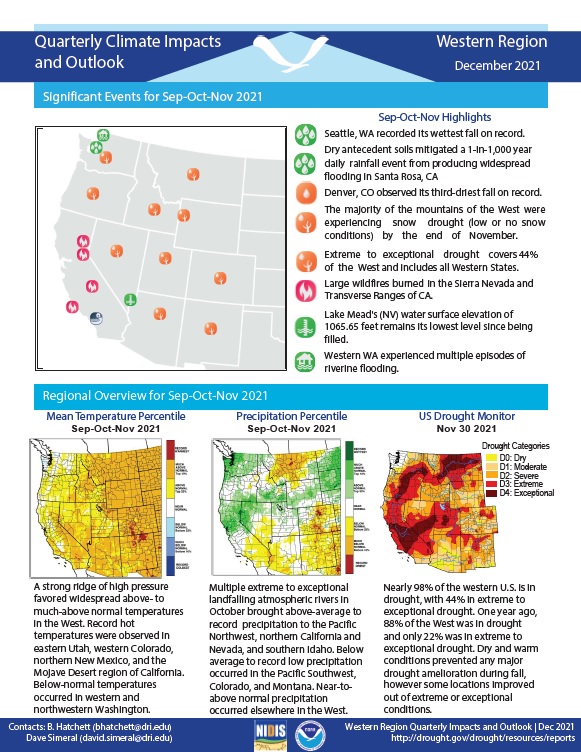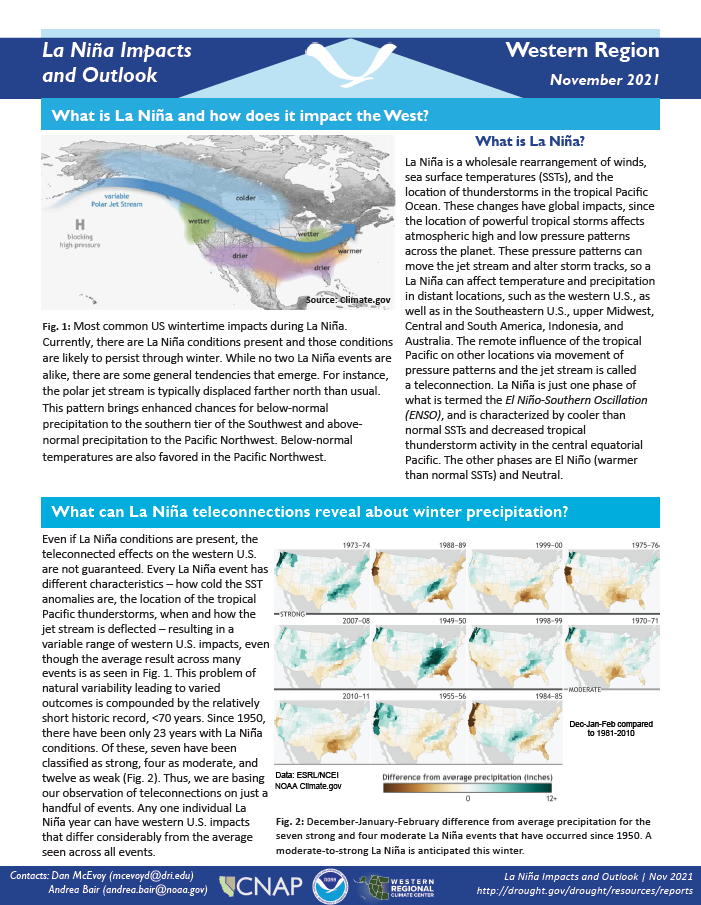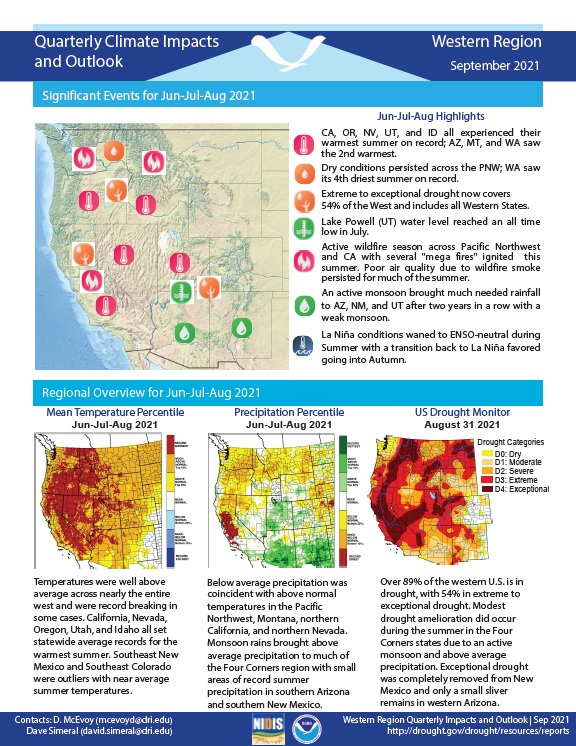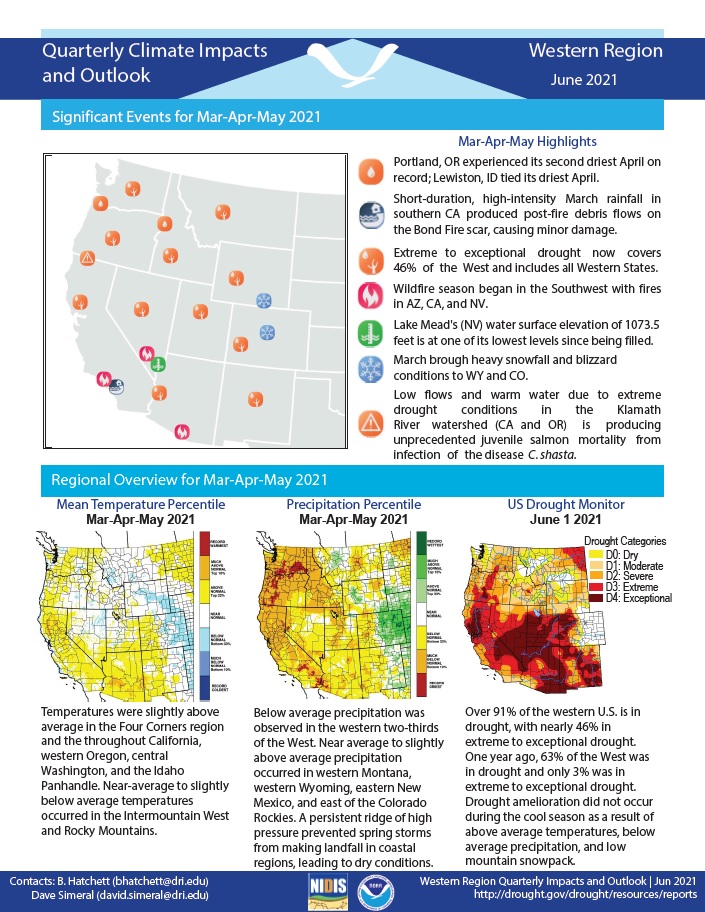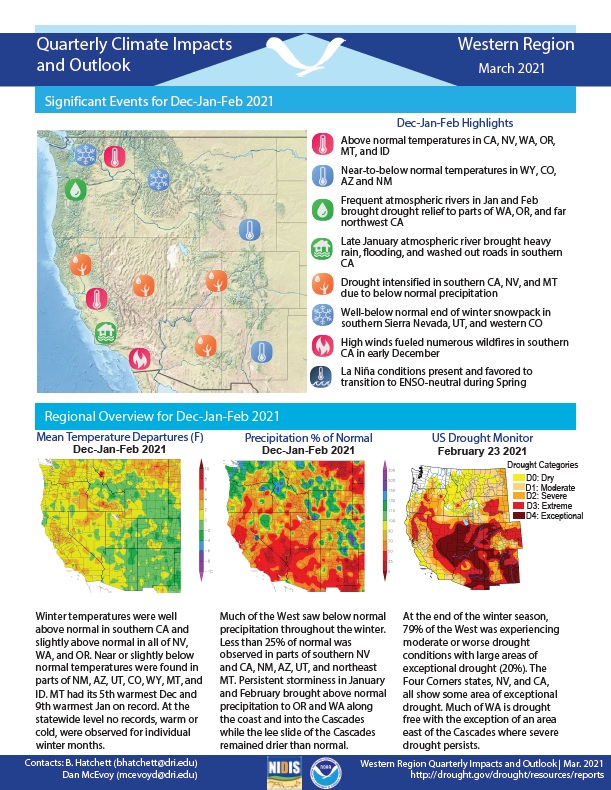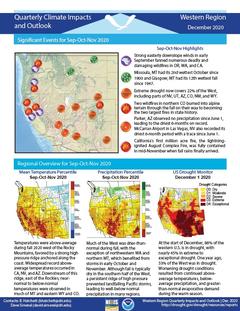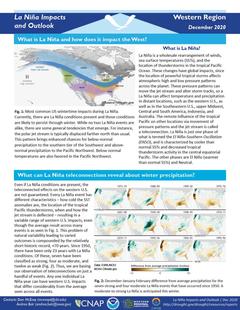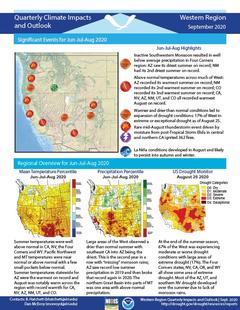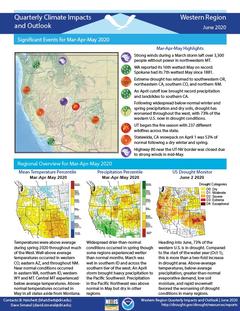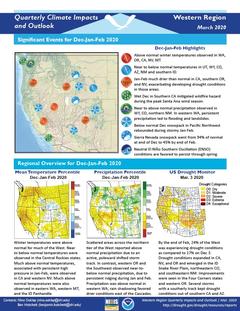Quarterly Climate Impacts and Outlook for the Western Region for September - November 2021. Dated December 2021.
This summary provides information on the typical La Niña winter pattern; the La Niña outlook; potential impacts; and comparisons of conditions during previous La Niña years for the Western U.S., updated in November 2021.
NOAA’s Regional Climate Services Program created these outlooks to inform the public about climate impacts within their respective regions. Each regional report contains easy-to-understand language, and anyone can access them through the Drought Portal.
Quarterly Climate Impacts and Outlook for the Western Region for June - August 2021. Dated September 2021.
Temperatures were well above average across nearly the entire west and were record breaking in some cases. Over 89% of the western U.S. is in drought, with 54% in extreme to exceptional drought.
Quarterly Climate Impacts and Outlook for the Western Region for March - May 2021. Dated June 2021.
Quarterly Climate Impacts and Outlook for the Western Region for December 2020 – February 2021. Dated March 2021.
Winter temperatures were well above normal in southern California and slightly above normal in all of Nevada, Washington, and Oregon. Near or slightly below normal temperatures were found in parts of New Mexico, Arizona, Utah, Colorado, Wyoming, Montana, and Idaho. Much of the West saw below normal precipitation throughout the winter.
Quarterly Climate Impacts and Outlook for the Western Region for September – November 2020. Dated December 2020.
Temperatures were above-average during the fall west of the Rocky Mountains, favored by a strong high pressure ridge anchored along the coast. Although fall is typically dry in the southern half of the West, the persistent ridge prevented landfalling Pacific storms, leading to well-below normal precipitation in many regions.
Provides information on the typical La Niña winter pattern; the La Niña outlook; potential impacts; and comparisons of conditions during previous La Niña years.
NOAA’s Regional Climate Services Program created these outlooks to inform the public about climate impacts within their respective regions. Each regional report contains easy-to-understand language, and anyone can access them through the Drought Portal.
Quarterly Climate Impacts and Outlook for the Western Region for June – August 2020. Dated September 2020.
Summer temperatures were well above normal in California, Nevada, the Four Corners and Wyoming. Pacific Northwest and Montana temperatures were near normal or above normal with a few small pockets below normal. Large areas of the West observed a drier than normal summer with southeast California into Arizona being the driest. This is the second year in a row with “missing” monsoon rains.
Quarterly Climate Impacts and Outlook for the Western Region for March – May 2020. Dated June 2020.
Temperatures were above average during spring 2020 throughout much of the West. Widespread drier-than-normal conditions occurred in spring though some regions experienced wetter than normal months.
Quarterly Climate Impacts and Outlook for the Western Region for December 2019 – February 2020. Dated March 2020.
Winter temperatures were above normal for much of the West. Near to below normal temperatures were observed in the Central Rockies states. Scattered areas across the northern tier of the West reported above normal precipitation due to an active, poleward shifted storm track. In contrast, western Oregon and the Southwest observed near-to-below normal precipitation, due to persistent ridging during January and February.


